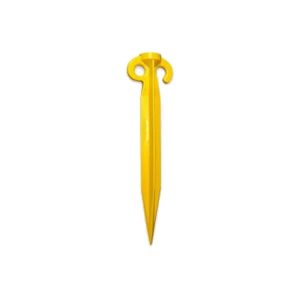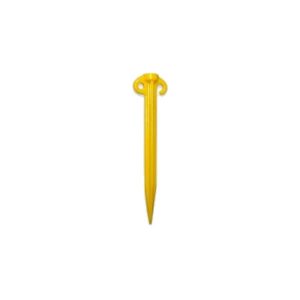Self Recovery Techniques
We all get stuck when we’re driving offroad, and some get stuck more than others (not pointing any fingers here because that’s normally me). When we’re in a convoy with friends it’s not a big deal, but when you’re out there alone, it can be a bit more tricky. We’ve got some practical tips to make sure that your next solo recovery is easy, safe and as quick as it can be.
What to do when you get stuck by yourself
The first thing to remember is the famous saying from The Hitchhikers Guide To the Galaxy – ‘Don’t Panic”. Keeping a calm head is about the best thing that you can do. If you panic you’ll start to do things wrong, or do the wrong things, and either way you’ll end up getting yourself into more trouble. The first thing to do is step out of your vehicle, take a look around and find out the real problem. You could be hung up on a rock that you didn’t see before, you could be spinning only one wheel, you could be running up against a step that’s the wrong angle. Take the time to look around and see everything that’s going on.
Once you’ve found out what’s actually got you stuck, think about what you need to do to get unstuck.
Use your 4WD systems
This applies mostly to modern 4WD’s with more tech wizardry and gadgets built in, but also to older 4WD’s too. It’s common to see people bogged down on the beach, and even the tracks leading to the beach, all because they didn’t put the vehicle in 4WD, or they’ve forgotten to lock in the front hubs.
There’s also different 4WD modes. In most vehicles you can at least lock the centre dif, and if you’ve got lockers front and/or rear, they can also help to get you out of a situation where you’re sitting there spinning your wheels.
Lower your tyre pressure
So many people for get this. So many. While there are minimums that you should keep to please remember that you can go very low for short times to get out of trouble, but just remember not to throw the steering wheel around. Sand and mud driving really relies on tyre footprint for traction, and lowering your tyre pressure increases that footprint to give you better grip. This can also help when driving over rocks as your tyres will deform around rocks better giving better traction then just trying to push them out of the way.
Dig and build
A bit of shovel time can work wonders! Digging out your wheels lets you get better angles to get out, and you can also dig under your chassis and diffs to get better clearance there. Creating a ramp in front of each tyre makes it easier for your vehicle to pop out of any holes that you’ve dug yourself into.
Alternatively, adding dirt, rocks and logs into holes in the track will help to build up the base and give you a firmer and higher footing to get through. For vehicles with smaller tyre sizes this is especially important if the tracks have been torn up by people running 35’s and is rutted out.
Lastly, just wait
This is a bit of a strange one, but it’s also a good one. Mud dries out, sand gets cooler, and people come along. The time that you spend waiting is also a good chance to come up with other ideas of how to get yourself unstuck. If nothing else, just pull out some chairs and enjoy the nature!
Safety for self recoveries
This is a big one. When you’re alone there’s no one to help. Sure, having a satellite phone and UHF is all well and good, but what happens when your batteries run out? No matter what it will still take time for people to eatt to you, and if you’ve done something stupid and are in a real emergency situation, you may not have that time. Because of this always make sure that you double-down on safety. Keep people out of the way, make sure that you don’t let yourself (or anyone else) get into a dangerous situation. Remember that losing a car is bad, but loosing your life is a whole lot worse.
One big tip that we have for everyone is – stay with your vehicle. Don’t try to walk out of where ever you are unless you are 200% certain that you can make it easily in a short time. Being stuck for a day or two in your vehicle isn’t great but being stuck in the outback without shelter is a whole lot worse.
What recovery gear do you need for solo recoveries?
If you’re driving with others, snatch straps are still the king of recovery gear. When you’re alone they are almost completely useless, because there’s no other vehicles to snatch from. It’s only useful if another vehicle turns up to help.
The recovery gear that we recommend for self recoveries is:
- Traction boards / Recovery tracks – These are the best way to get out of almost every situation. You can use them to dig and make ramps,. You can use then to span ruts like bridges, and they are great traction devices in slick mud and clay. Every 4Wd’er should have at least 2, but we’d normally recommend having at least 4 (one for each wheel).
- 4WD Winch – While these are not something that everyone needs, if you’re doing a lot of driving where you’re alone, a winch should be high up on your list of needs. A good winch will pull you out of things that you’d never get out of any other way.
- Jacks – These can be anything from a good hi-lift jack to a standard bottle jack. A jack can help you to get out of a hole and give you enough room under your tyres to throw some dirt, rocks, or anything else, under. Just remember that jacks can be dangerous, so always stay clear of the underside of the vehicle when it’s jacked up,. HI-lift jacks also need special considerations because incorrect use can (and does) result in injuries and death.
I hope that this has given you an insight into what you can do to get yourself unstuck, and shown you that you don’t always need to rely on others to get out of trouble. If you’ve got any other tips or ideas, we’d love to hear from you, so leave a comment below!





